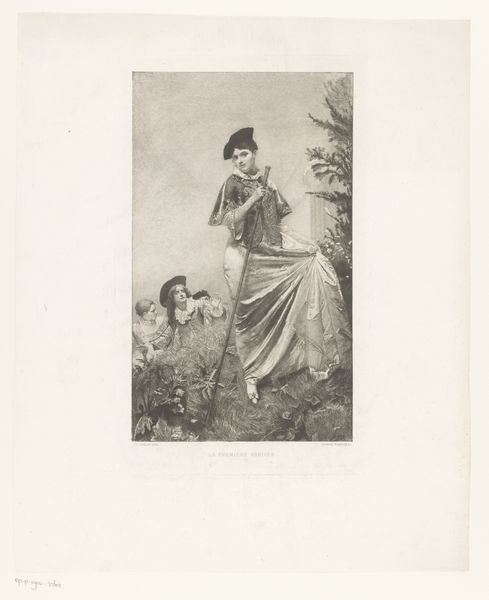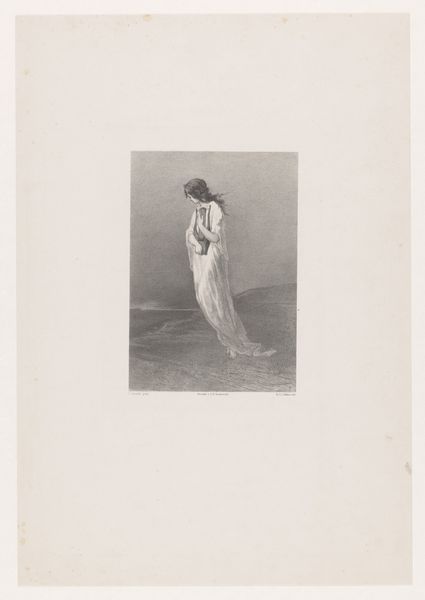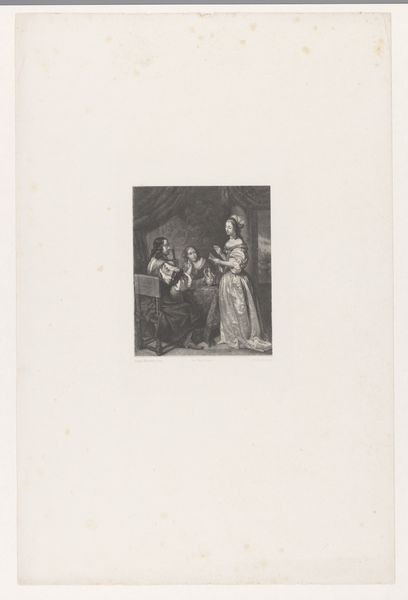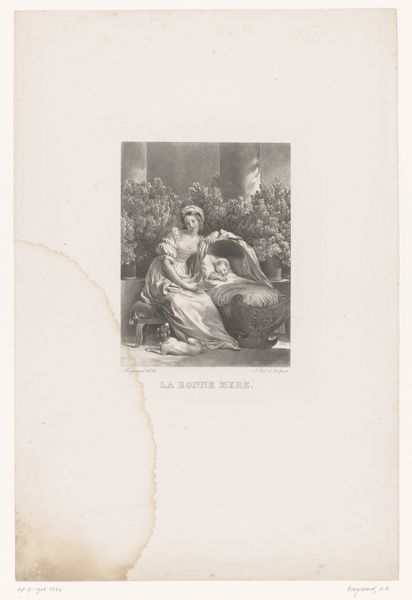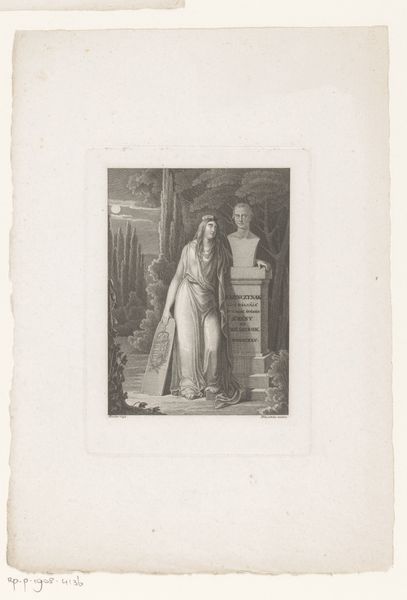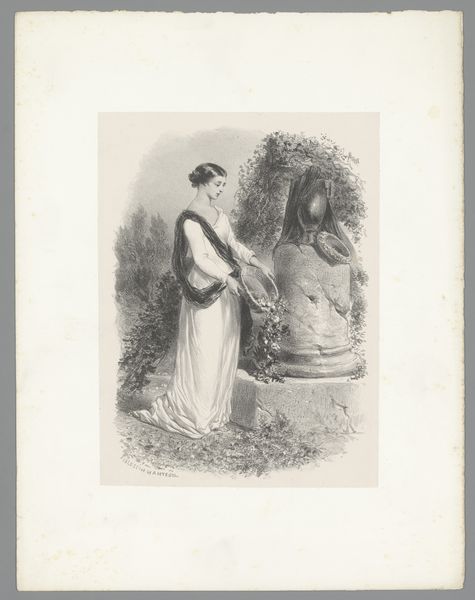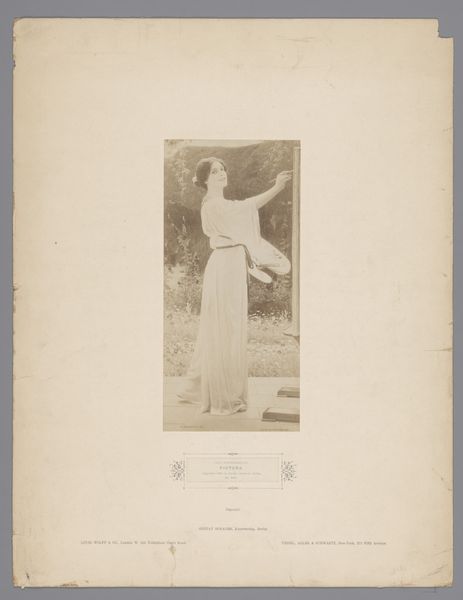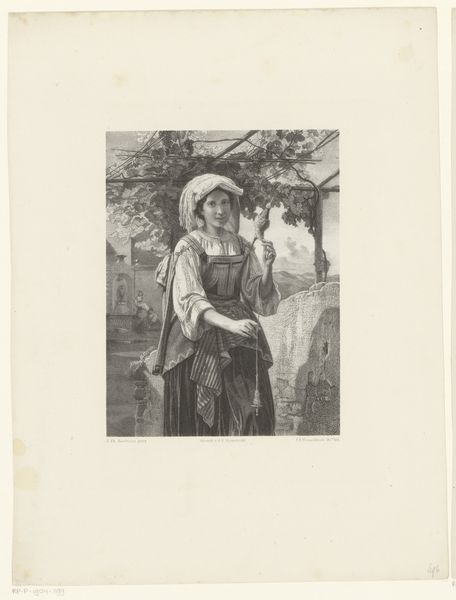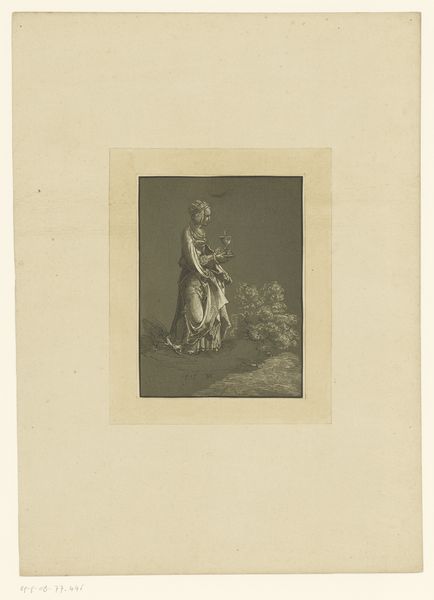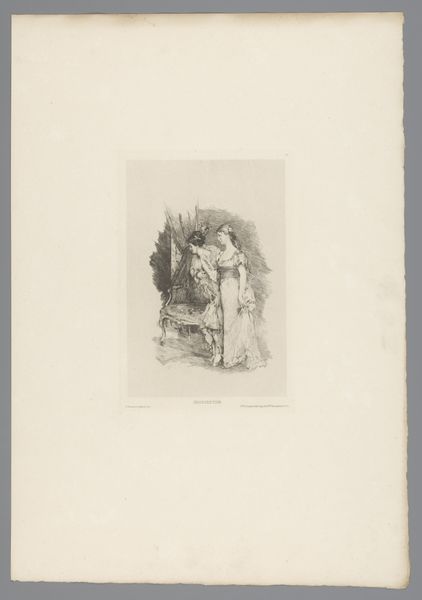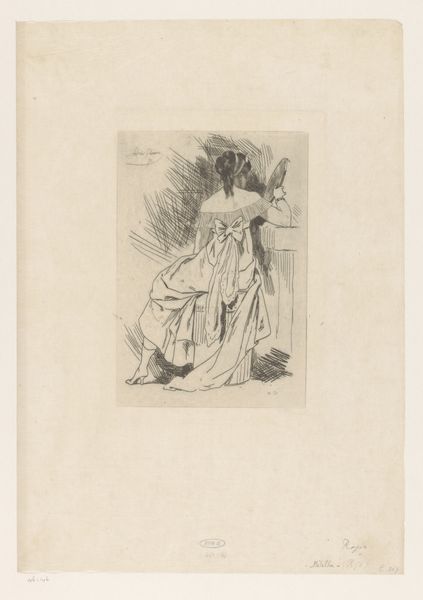
Dimensions: height 252 mm, width 180 mm
Copyright: Rijks Museum: Open Domain
Editor: We're looking at Léopold Flameng's etching, "Psyche met aan haar voeten Cerberus," from 1859. It's...dreamlike. The wispy lines create a surreal landscape, but there’s an ominous feeling with Cerberus lurking nearby. What's your interpretation of this piece? Curator: Ah, yes, Psyche's journey! Flameng captures her not just confronting, but seemingly befriending Cerberus, that beastly gatekeeper. It tickles me, this unexpected companionship in the underworld. Notice how she’s holding the box— Pandora’s perhaps?— a task set by Venus, her future mother-in-law! Do you think the landscape reflects Psyche's internal struggle? The darkness and light both vying for dominance? Editor: That's a fascinating point! I was so focused on the mythic elements, I hadn’t considered the internal conflict. The etching itself feels so…transitional, like Psyche herself. Do you think the medium, etching, helps communicate that? Curator: Absolutely. Etching allows for that hazy, almost ethereal quality. It doesn't offer the starkness of, say, wood engraving. It mirrors the shifting nature of Psyche's reality, and Flameng has really leant into it here, hasn't he? Making you feel as lost and hopeful as Psyche herself must be, I wager! Editor: It does! I didn't initially consider the parallels between the visual style and Psyche's emotional journey. It's so cool when an artist can subtly communicate the story through technique like that. Curator: Precisely! It reminds me that often, the most captivating stories aren’t just told, but felt through the very essence of the artwork. Makes you want to dive deeper into the myth itself, doesn't it? Editor: Definitely! Thanks for shedding new light on this. I see so much more now.
Comments
No comments
Be the first to comment and join the conversation on the ultimate creative platform.
